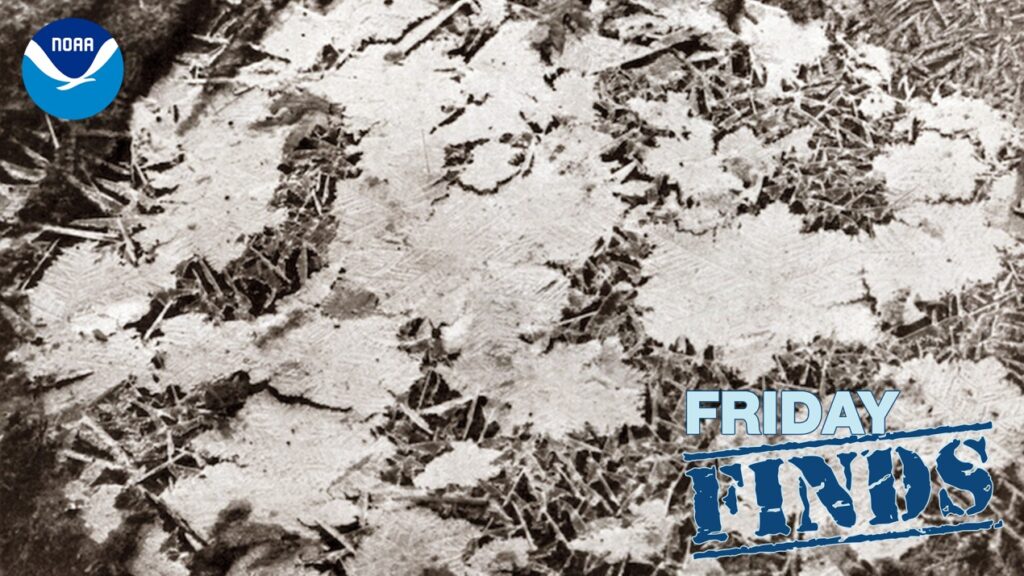By noaa.gov.
On the morning of February 28, 1936, “ice crystals of unusual size” were found in Boise, Idaho. According to the March 1936 edition of the Weather Bureau’s Monthly Weather Review, the group was 22 inches across, or almost twice as wide as two standard dinner plates, and included “stars” as large as 4.75 inches in diameter along with smaller triangle-shaped crystals between the “stars.”
How did such large ice crystals form?
The night before these crystals were found, the temperature dropped from 35 degrees to 31 degrees. There must have also been some moisture in the air and probably a somewhat high relative humidity. As the temperature dropped and the water in this puddle started to freeze into ice, it’s possible that the water vapor in the air underwent deposition, changing from a gas directly into a solid state, thus forming a rather large ice crystal as more and more moisture was extracted from the air.
read more at noaa.gov

